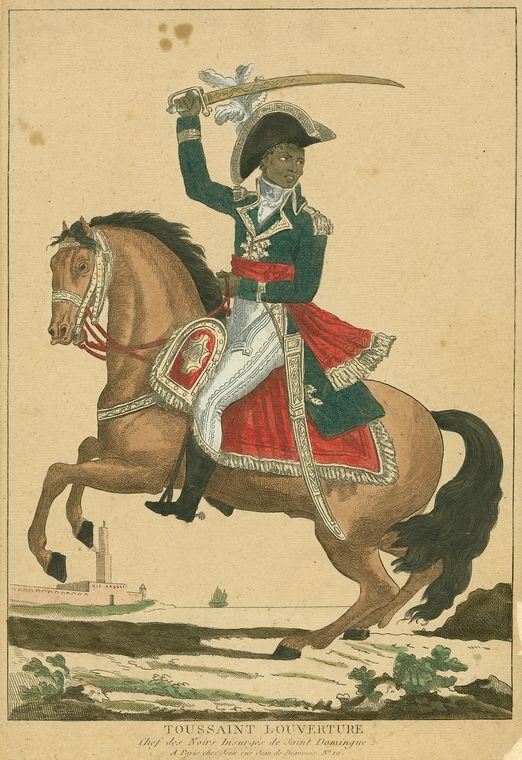History You Didn't Learn: The Haitian Revolution
On February 7, 2021, President of Haiti, Jovenel Moïse, refused to relinquish his authority - as his tenure is debated by opposition to have ended, while Moïse argues it ends in 2022. Moïse’s refusal to step down from office has renewed ongoing protests and strikes in Haiti in response to corruption.
Despite the current brutal repression of these protests by the Moïse regime, the violence Haitians are facing goes far beyond the dictates of one ruler. Haiti’s history plays a significant role in the construction of global, racial capitalism and must be examined in order to understand its troubles today. Such an analysis must begin with the unprecedented Haitian Revolution, the only successful revolt by enslaved people in modern history.
Today, Haiti is the poorest country in the Western hemisphere as a direct result of the exploitation by the French, and later, the American empires. These ruthless acts of entrapping Haiti in poverty were a punishment on behalf of the Euro-American powers that feared the Haitian Revolution would inspire rebellion within their other colonies around the world.
The people of Haiti have faced genocide, slavery, imperialism, dictatorships, coups, widespread poverty and climate change catastrophes, yet its people continue to rebel. This history of strength places Haiti at a critical center for resistance against the global structure of racial capitalism.
By 1789, Haiti (or what was then called Saint-Domingue by the French colonizers) was the Western hemisphere’s most economically valuable colony and deeply divided along racialized factions: European colonists, affranchis (free mulattoes or blacks) and enslaved people from Africa, the vast majority of the population. The Europeans were further divided between the white property owners and petit blancs, the petty bourgeoisie.
Both the affranchis and petit blancs were frustrated with the unequal structure of society, but exploitative institutions, such as slavery, they largely accepted. By 1791, widespread violence broke out once the French revolutionary government granted citizenship to the affranchis. Amidst this instability, the revolution then began with enslaved people rebelling against their masters.
From this rebellion, Toussaint L’Ouverture - a formerly enslaved person - emerged as a leading figure of the revolution. While L’Ouverture is the most well-known figure of the revolution, notable women also made immense revolutionary contributions such as Cécile Fatiman and Marie-Jeanne Lamartinière. Ultimately, external and internal pressure led to France abolishing slavery and granting citizenship to the formerly enslaved peoples of Saint-Domingue.
As a result of abolition in Saint-Domingue, L’Ouverture joined forces with the French by pledging his allegiance in order to pursue other political goals. By 1801, L’Ouverture conquered the Spanish-controlled half of the island (or what is the Dominican Republic today) and declared himself “governor-general for life.” However, these actions taken by L’Ouverture angered the newest ruler of France, Napoléon Bonaparte. Bonaparte sought to restore the old regime and reinstate slavery in Saint-Domingue by sending his brother-in-law, General Charles LeClerc, along with French forces to control the island.
Fighting to preserve its empire proved deadly for France when its forces were met with local resistance and disease. Saint-Domingue declared independence in 1804 and named the new country Haiti, which was believed to be the original name used for the island by the indigenous Taino inhabitants.
As a newly independent country, Haiti became the second independent country (after the U.S.) of the Western hemisphere and the only successful revolt of enslaved people in modern history.
Additionally, Haiti is often referred to as the “first black republic in the world,” however, this claim could be deemed controversial as independent Haiti’s first leader, Jean-Jacques Dessalines (one of L’Ouverture’s generals), declared himself emperor.
As a revolutionary state, enshrined in Haiti’s constitution was the rejection of white supremacy. In Article 14 of the 1805 Constitution, it is stated that “All meaning of color among the children of one and the same family, of whom the chief magistrate is the father, being necessarily to cease, the Haytians shall henceforth be known by the generic appellation of blacks.” In other words, citizenship was dependent upon rejecting racial hierarchy and becoming a “black” citizen, regardless of one’s actual race.
Despite these extraordinary and revolutionary accomplishments, this rebellion led to European powers ostracizing Haiti from global trade. As a result, in 1825, Haiti was forced to pay France “reparations” for supposed lost property - referring to enslaved people - as a result of the revolution. Haiti continued to pay this crippling debt for 122 years so France would not invade the country. A major reason Haiti was able to settle its debts was due to voluntary contributions by Haitian citizens.
It is evident that despite the white-supremacist, imperialist siege laid upon Haiti for hundreds of years, much can be learned from the revolutionary strength of Haiti. From the birth of this nation, racial hierarchy was intensely rejected and the people were unified by struggle against external control.
Written by Olivia Deally











